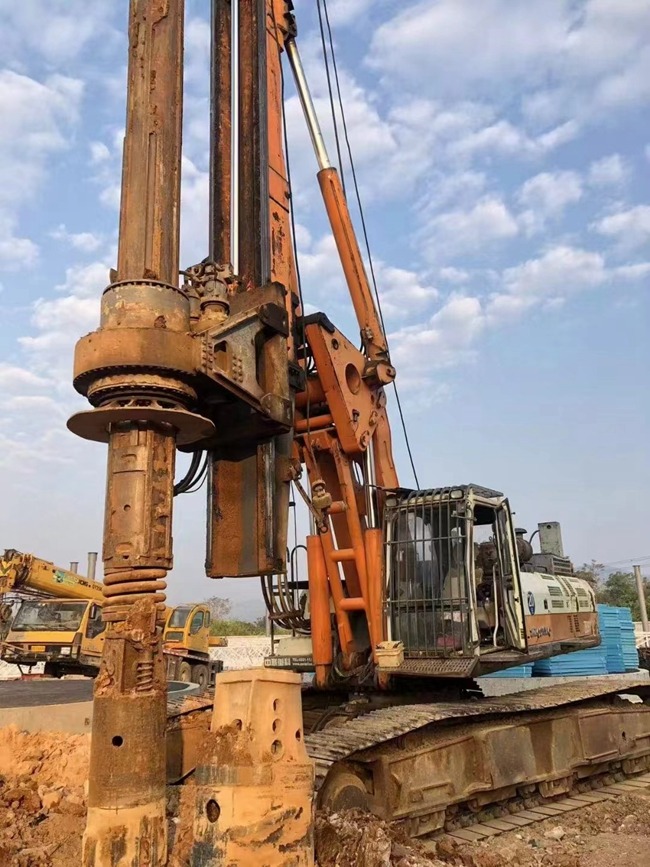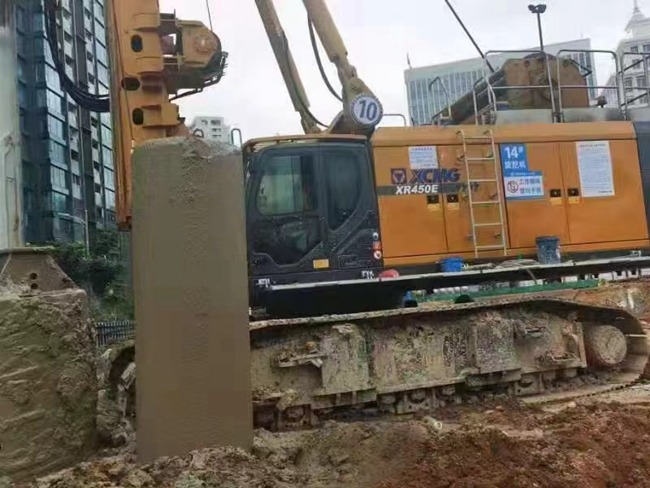Rock Name (Origin)
Different rock names represent their origin. The origin of rocks includes (magmatic rock (intrusive rock, volcanic rock), sedimentary rock, and metamorphic rock). Compared with magmatic rock and metamorphic rock, sedimentary rock has lower strength. After knowing the name of the rock, you can know its origin, and therefore its approximate strength, rock state, and drilling conditions.
Uniaxial Compressive Strength
Uniaxial compressive strength includes saturated, natural, frozen, and other tests. The most common one is saturated uniaxial compressive strength, in which the saturated compressive strength test is lower than the natural strength of rock.
Triaxial Compressive Strength
When the rotary drilling tool enters the rock at the bottom of the hole, the rock is in the form of an integral bedrock. However, the uniaxial test is performed when the rock test block has no lateral support. Therefore, the triaxial compression test is closer to the integral bedrock than the uniaxial compression test. rock state.
Degree of Weathering
Rock weathering is closely related to uniaxial/triaxial compressive strength, RQD value (core integrity), and cracks. Therefore, the weathering level must be understood, especially the selection of drilling tool teeth, the probability of coring, etc. The higher the degree of weathering of a rock, the lower its strength. For example, the intensity of weathering is higher than strong weathering, and strong weathering is higher than full weathering. But it also depends on what kind of rock it is because of its different rock origins. For example, magmatic rock has strong wind The level of weathering is similar to the weathering intensity of its sedimentary rocks. There is an old saying: a skinny camel is bigger than a horse.
Fissure
The different bedding, cleavage, and joint fissures of the rock strata affect the integrity of the core. There may be no bedding fissures that cause the core to be continuous, so the core cannot be taken up; it may be that the joints or cleavage fissures cause the core to spin. It split in two directions (two petals), and the core could not be taken out. In short, the bedding fissures are conducive to core breaking, but the fissures cannot be extremely developed, otherwise the core cannot be taken out.
Rock Structure
Structure of magmatic rock: The structural characteristics of magmatic rock are a comprehensive reflection of the magma composition and the physical environment when the magma condenses. According to the crystallization degree, particle size, and uniformity of minerals, the structure can be divided into three categories: Holocrystalline structure rocks are all composed of crystallized mineral particles. Among them, those whose crystal grains of the same mineral are similar in size are called equigranular structures; if the sizes of crystal grains are very different, they are called porphyritic structures. The fully crystalline structure is mainly characterized by plutonic and epigenetic rocks. Semi-crystalline structure rocks are composed of crystallized mineral particles and part of uncrystallized glass. Crystallized minerals with large particles and intact crystal forms are called porphyritic structures. Semi-crystalline structures are mainly found in epigenetic rocks and can sometimes be seen in some extrusive rocks. Amorphous structure is also called glassy structure. The rocks are all composed of glassy material condensed from lava. Amorphous structures are possessed by some extrusive rocks. The particle size of the crystal is the roughness, which affects the loss of drilling tools and drill teeth and the stability of drilling.
Structure
Intrusive rocks mostly have massive, mottled, and striped structures; extrusive rocks mostly have pores, almonds, rhyolite structures, etc. Sedimentary rocks mostly have bedding structures. Among them, metamorphic rocks have a multi-layered lamellar structure under the action of pressure and stress. Therefore, when rotary drilling drills into such structural rocks, the vibration is violent, and the eccentric holes, drilling tools, and drill teeth are seriously worn!
Mineral Composition
The main minerals of magmatic rocks are quartz, orthoclase, plagioclase, mica, hornblende, pyroxene, and olivine, etc.; the material composition of sedimentary rocks is the debris and dissolved materials of the three types of rocks originally formed; Minerals unique to metamorphic rocks, such as talc, chlorite, serpentine, etc.; as we all know, quartz, an inorganic mineral, is mainly composed of silica, which is a translucent or opaque crystal, generally milky white, and has a hard texture; while granite The main components are feldspar and quartz, which is why granite is not easily weathered and has high strength.
Pile Diameter
The larger the pile diameter is, the larger the core diameter will be, so the core will be less likely to break, resulting in a lower chance of coring. Therefore, using graded enlarging to form holes and multiple graded holes, may partially break the rock and remove the slag, and may remove the rock ring. No matter how the hole is finally formed, as the pile diameter increases, the hole-forming process will be arduous. The smaller the pile diameter, the higher the chance of coring. It is best not to exceed 1.2m for coring pile diameter, and 800mm-1m is the best.
Thanks



